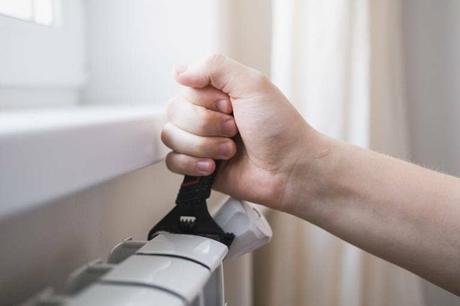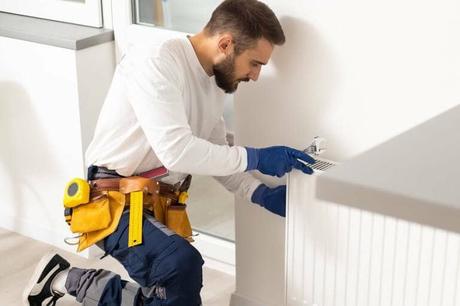What is causing your radiators to stay cold after bleeding?
The bleeding of a radiator is one of the most common recommendations and potential solutions to rectify plenty of home heating issues – but what happens when the process doesn’t work?
If any hot water radiators are failing to get hot, the typical first thought is to bleed the system and release any air that might have become trapped, that could be stopping hot water from entering and adequately filling the rad.
Usually, the bleeding operation will do the trick, but unfortunately it’s not always the case.
So why is your radiator still not working after bleeding? And what alternative measures can you take to ensure your radiators can warm up again? This article will explore what is causing your radiators to stay cold after bleeding, and explain the steps you can take to get them back working at their optimal capacity…

Why might bleeding a radiator not work?
There’s a few reasons why bleeding a radiator might not work, and some fairly simple avenues you can explore to work out what is causing the radiator bleeding process to be ineffectual. Starting with the following…
Inspect your thermostatic radiator valves
One of the most common issues that can prevent your radiators from heating up relates to troubles with thermostatic radiator valves (TRVs) – namely a stuck pin.
To test if this is the case with your radiators, take the head or cap off the TRV, and seek out the exposed pin. Check that it is not stuck in a closed position and thus curtailing water from flowing into the system.
If you do find the pin to be stuck, use some pliers or an adjustable spanner to grip the pin and move it up and down to loosen it. This should create enough space for it to enable hot water to flow back into the radiator as it should.
To test the theory, switch your central heating system back on and see if the radiators warm up as usual.
Perform a radiator power flush
Should the loosening of the TRV pin fail to rectify the problem however, and your radiators remain cold, then the slightly more involved process of performing a radiator power flush is the next logical step to take. This will eradicate the effect of any air lock that might be present in your heating system.
Our Advice Centre guide, how to flush a radiator in 10 steps, offers a detailed insight into how you go about commencing with a flush, although some will prefer to leave the job to a professional plumber or heating engineer.
As a brief overview, you should first close the thermostatic radiator valve as well as the lockshield valve, and after positioning a small towel beneath the air bleed, use a bleed valve key to open it and release air pressure from the rad. Then, use a ½ inch male fitting to enable a connection to a garden hose, and switch off your heating. Connect the hose to an appropriate spot to ensure excess water isn’t traveling to an unwanted area, ideally a garden space or a sizeable container, before opening the TRV. At this point, a mass of water should flow from the head of the radiator and out via the hosepipe, dispelling the airlock and hopefully solving the issue of your radiators not getting hot.
Is your heating system balanced correctly?
Should bleeding or flushing radiators fail to render them back to working at full capacity, and you are still finding certain appliances to be hotter than others in the home, it could be the case that you have an unbalanced overall setup.
Boilers and central heating systems transport hot water between multiple radiators, and so differentials in water pressure can cause some devices to remain at a lower level than their optimal temperature.
To balance the system, you should gauge the pressure of your central heating, and adjust your thermostatic radiator valves in accordance. Our guide on how to balance radiators provides more detailed instructions, but again it might be that you prefer to seek professional help to decipher whether an imbalance in heating devices could be leading to cold radiators in the home, and to help you address the problem.
Do you need new thermostatic radiator valves?
And if all else fails, it is definitely worth exploring the prospect that your thermostatic radiator valves require replacement.
Whilst the pin on a TRV getting stuck can be somewhat of a common occurrence and often an easily solvable issue, it is true that their condition can deteriorate over the course of a few years, particularly so when heavily relied upon in a draughty household for example. If your TRV pin is rusty or is simply proving rigid and nigh on impossible to shift, it might be time to invest in new thermostatic radiator valves.
Should you decide on this action, our guide on how to change a radiator valve without draining the system will be of assistance.

Radiator maintenance tips to keep your heating in shape
Once you’ve completed the aforementioned steps, if your radiators still aren’t getting adequately hot, you’ll have little choice but to consult a professional plumber or heating engineer for their take on the cause and recommended solutions.
In reality though, booking professional services at least annually is an excellent idea to assist with the maintenance of your heating system and ensure that everything is running smoothly regardless.
You should allow for a once over of all the main components within your heating system such as your boiler, radiators and any other alternative vices like heat pumps to reduce the risk of an inconvenient malfunctioning of the system at a vital time. In fact, the majority of central heating system warranties require an annual boiler service for validation of the guarantee.
A check over of your heating system inhibitor levels should also be performed in tow – water traveling through the radiators can interact unfavorably with internal elements leading to potential rusting or corrosion. A build-up of sludge can prove another by-product when inhibitor levels are below what they should be, so it is important to keep on top of the solution to make sure your heating operates as well and as easily as it should do for several years.
Get in touch with BestHeating
You should now understand why radiators might continue not to heat up adequately and have an idea of how to remedy the situation. But if you would like any further help surrounding how to get your radiators working properly, or need advice for any other heating queries you might have, don’t hesitate to get in touch with the BestHeating team.
You can do so by leaving your thoughts in the comments section below, or by contacting us through Instagram, Facebook or Twitter.
Got a radiator or heating question?

You can find a range of helpful answers to hundreds of common home heating questions on our FAQ pages.
Click the link or tap the image above to ask a question of your own!

